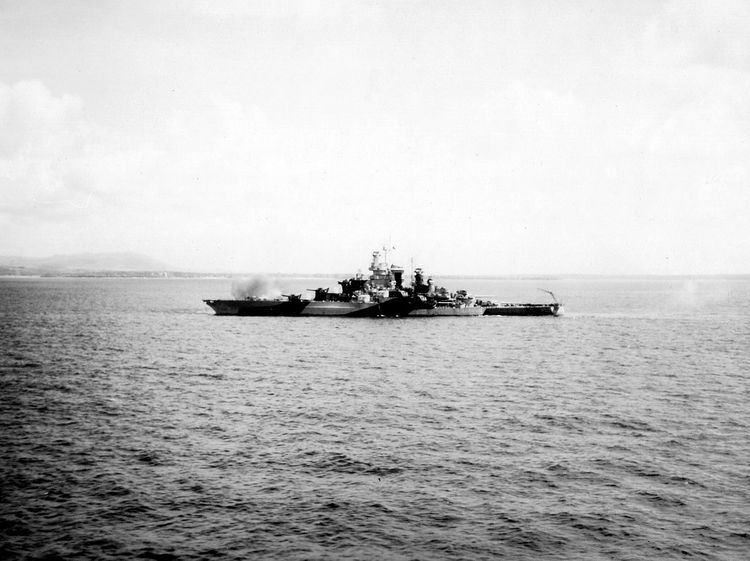Built 1916–1921 | ||
 | ||
Builders New York Naval ShipyardMare Island Naval Shipyard | ||
The Tennessee class was a class of battleships of the United States Navy. The class comprised two ships: Tennessee and California. They were modified versions of the New Mexico class featuring improved underwater armor for better torpedo protection and 30-degree elevation on their main batteries, as opposed to 15 degrees for the New Mexicos. Both ships were extensively rebuilt after being damaged during the attack on Pearl Harbor, and survived World War II to be scrapped shortly after.
Contents
Class history
Tennessee and her sister ship California, already incorporating many of the innovations in the New Mexico class, were the first American battleships built to a "post-Jutland" hull design. As a result of extensive experimentation and testing, her underwater hull protection was much greater than that of previous battleships; and both her main and secondary batteries had fire-control systems.
Since Tennessee's 14-inch (356 mm) turret guns could be elevated to 30 degrees—rather than to the 15 degrees of earlier battleships—her heavy guns could reach out an additional 10,000 yards (9,100 m). Because battleships were then beginning to carry airplanes to spot long-range gunfire, Tennessee's ability to shoot "over the horizon" gave her a material tactical advantage.
The Tennessee class, and the three ships of the Colorado class which followed, were identified by two heavy cage masts supporting large fire-control tops, twin funnels and no secondary gun casemates in their hulls. These features distinguished the "Big Five" from the rest of the battleship force (older battleship classes had had their noticeably lighter cage masts replaced with tripod masts during inter-war modernization and were built with single funnels and casemates in their hulls).
In the attack on Pearl Harbor, Tennessee was damaged by two bombs and California was sunk by two torpedoes and two bombs. Both ships (and West Virginia of the Colorado class) were extensively reconstructed into essentially new vessels. Their hulls were 'bulged' for better stability, superstructures were scrapped down to the deck and completely rebuilt, their secondary battery of 5-inch (127 mm) 51-caliber anti-surface and 3-inch (76 mm) 50-caliber anti-aircraft guns was replaced by a uniform secondary of 5 in (127 mm) 38-caliber dual-purpose guns, and they added a number of 20 and 40 mm anti-aircraft weapons. The twin funnels were replaced by a single funnel faired into the superstructure tower, similar to the newer South Dakota class.
General characteristics
The Tennessees had a 624-foot (190 m) overall length and a beam at the waterline of 97 feet (30 m). They displaced 32,600 long tons (33,100 t) at normal load and 33,590 long tons (34,130 t) at deep load and had a draft of 30.5 feet (9.3 m). They were designed with a clipper bow to make them dryer in rough weather. However, also as in previous classes, the secondary battery was located in the upper hull, which proved to be excessively wet for effective use. This would be remedied in the Colorado class which followed.
Place of Tennessee class in U.S. Navy planning
The Tennessee class was part of the standard-type battleship concept of the U.S. Navy, a design concept which gave the Navy a homogeneous line of battle (it allowed planning maneuvers for the whole line of battle rather than detaching "fast" and "slow" wings). The standard-type battleship concept included long-range gunnery, moderate speed of 21 knots (39 km/h; 24 mph), a tight tactical radius of 700 yards (640 m) and improved damage control. The other standard-type battleships were the Nevada, Pennsylvania, New Mexico, and Colorado classes.
By the naval planning theory of the U.S. Navy, influenced strongly by Alfred Thayer Mahan, the ability to chase down enemy warships was of secondary importance to being able to win a battle, as naval objectives were seen to be more easily accomplished by seizing targets. The theory, thus, was that advancing on a target would force the enemy's naval forces to come out, give battle and be destroyed by the more heavily armed and armored battleships of the U.S. Navy.
